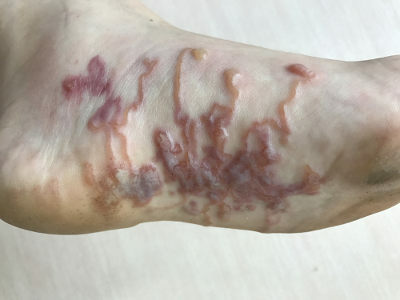THE leptospirosis is a disease caused by bacteria of the genus Leptospira, which have a spiral shape and are flexible. Transmitted by contact with urine from infected animals, as well as with water or soil contaminated by the bacteria, this disease is a cause of constant concern during rainy seasons.
Normally rodents, especially sewer rats, are the great villains when it comes to leptospirosis, since they are the main transmitters of the disease. However, there are other animals in which the bacteria can settle, including pigs, cattle and even dogs.
To enter our body, the bacterium uses lesions on the skin and mucous membranes, however, it can also penetrate the skin without injury, this occurs when we are exposed for a long time to water contaminated.
The disease manifests itself differently in each person and can be divided into two phases: a precocious (leptopyremic) and the late (immune). At early stage, usually the symptoms are fever, headaches, muscle pain, joint pain, nausea, vomiting, diarrhea, light sensitivity, dilation of blood vessels in the eyes, among others. Normally, leptospirosis in this phase regresses within a week at most. Furthermore, because its symptoms are not very specific, the disease is rarely diagnosed correctly.

Bacteria of the genus Leptospira are the cause of leptospirosis
At late stage of the disease, the clinical manifestations are more severe, with the appearance of three main symptoms being common: jaundice, renal failure and hemorrhages (usually pulmonary). These symptoms constitute the call Weil Syndrome. It is noteworthy that pulmonary hemorrhage is an important feature to be observed for the diagnosis of late stage leptospirosis. This condition usually appears before jaundice and renal failure, being extremely severe. In some cases, the disease can lead to death.
O treatment it is based on the administration of antibiotics and hydration of the patient. When the disease causes kidney failure, hemodialysis may be necessary. Remember that the doctor will guide the proper treatment in each case.
Leptospirosis is a disease with high incidence in Brazil, especially in places with poor basic sanitation and large numbers of rodents. It is worth remembering that, in regions where there are many floods, the problem becomes more serious, as the population ends up constantly in contact with water that may be contaminated.
To reduce the cases of this disease, it is of fundamental importance to make greater investments in sanitation, especially with regard to garbage collection and rainwater drainage. In addition, it is important that the population is aware of the forms of contagion in order to avoid risky situations, such as exposure to water from floods and floods.
By Ma. Vanessa dos Santos



